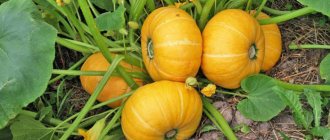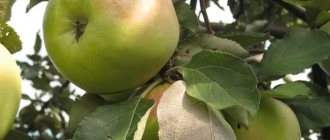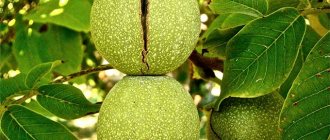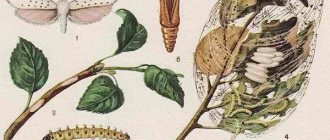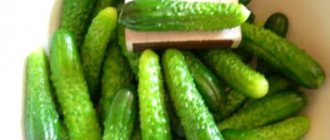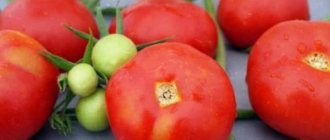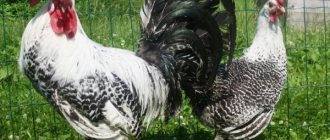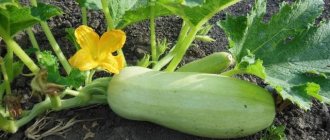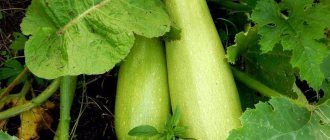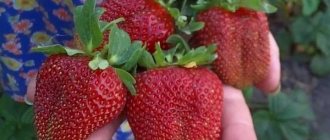- Harvest and storage
The Bellefleur-Chinese apple tree is a well-known late-autumn variety selected by I.V. Michurin, bred at the beginning of the twentieth century. Its main advantage is large marketable fruits with a delicious dessert taste. The apple tree is distinguished by its productivity and moderate resistance to frost, so it still enjoys well-deserved popularity among amateur gardeners.
Apples of the "Bellefleur-Chinese" variety do not fall off the tree during the ripening process and retain their aroma throughout the entire shelf life
We suggest that you familiarize yourself in more detail with the description of the Bellefleur-Chinese apple tree and reviews of gardeners about it. The main characteristics of the variety are given in the table:
| Parameter | Characteristic |
| Culture | Apple tree (Malus domestica Borch.) |
| Variety | "Bellefleur-Chinese" |
| Tree height | Vigorous: from 6-8 to 10 m |
| Precociousness | Low: 8-9 years after planting |
| Terms of removable (technical) maturity | End of August – 2-3rd decade of September |
| Period of consumption/shelf life of fruits | Late autumn; apples are stored for about two months (until early December), in the refrigerator - until January |
| Type of fruiting | Mixed: fruits are set on fruit twigs and last year's growths |
| Productivity of an adult tree | 50-70 kg. Fruiting is annual, as the tree matures it becomes slightly periodic |
| Size and weight of fruits | Medium size or large (from 120 to 300 g), rarely - up to 500 g |
| Shape and color | The fruits are round-oval in shape, with narrow, weakly defined ribs in the upper part. The main color at the time of harvesting ripeness is light yellow; as consumer ripeness is reached, the skin turns white. The outer color on the smaller part of the fruit is expressed as a crimson-red striped blush on a blurred pink background. The skin is strong, shiny, there are no subcutaneous points |
| Fruit pulp | White, fine-grained, tender, juicy and very aromatic |
| Tasting assessment (taste qualities) | 4.7 points (out of 5) – taste of dessert quality, sweet, with pleasant sourness and spice |
| Purpose of fruits | Dessert (universal) |
| Sustainability | Winter hardiness is average; high susceptibility to scab and fruit rot |
| Year of inclusion in the State Register of the Russian Federation | 1947 |
| Recommended growing region | North Caucasian (6) |
| Originator | Federal State Budgetary Institution "Federal Scientific Center named after I.V. Michurin" (Michurinsk, Tambov region) |
What type does it belong to?
Bellefleur-Chinese is a variety of apple tree in the middle regions of the southern zone of the European part of Russia.
In the middle zone it is classified as an autumn variety , in the south - a late summer variety.
Bred by Michurin himself , this apple tree was once very popular and widespread in our gardens.
Unfortunately, it could not withstand competition with new varieties that were more resistant to cold and disease.
Check out other autumn varieties of apple trees: Aelita, Gala, Lyubava.
Apple tree Bellefleur Bashkir
The Bellefleur Bashkir variety is the same Bellefleur Chinese, to which the genes of the local variety Bashkir handsome have been added. It began to be created already in the seventies, but has only been tested for about three decades. Their properties are almost identical, but slightly improved for cultivation in Bashkiria.
Apple tree Bellefleur Bashkir.
The apple tree is of medium height, usually grows up to 5 meters, the crown is spherical, simply huge in volume. Therefore, for planting you need to allocate a lot of space, up to 7 meters from neighboring plants. The Bellefleur Bashkir variety cannot boast of huge yields, but it can easily withstand drought and decent frosts. The shelf life of sweet fruits that have the same color is up to 5 months, and the apples are slightly smaller in size than the parent variety.
Description of the Bellefleur-Chinese variety
Let us consider separately the appearance of the apple tree and the fruit itself.
The trees are tall and powerful. The crown is formed by thick branches, round and wide in shape . Apple trees bear fruit mainly on long and thin fruit twigs, as well as on the ends of last year's shoots.
The shoots are light brown with a reddish tint, strongly drooping.
The lentils on the shoots are small and round. The color of the leaves is closer to dark gray.
The leaves are large, have a rounded base, oval or ovate in shape, and heavily pubescent.
The surface of the leaf is wrinkled, strongly curved, the leaves are folded along the central vein.
The edges of the leaves are wavy and jagged. There are differences in the shape of the teeth depending on the region of growth: forked teeth in the central regions and crenate in the Lower Volga region and in the south.
The leaf petioles are thick and of medium length. There are small lanceolate stipules.
In nurseries, the seedlings are tall, with dark brown bark. The leaves on the shoots grow at an angle of 90º relative to the stem.
The fruits from young apple trees are very large (200-300 g) , becoming somewhat smaller with age (120-200 g).
Sometimes apples reach outstanding sizes of 500-600 g.
The fruits are round, slightly flattened, and largely ribbed along their entire length. The calyx is closed.
The saucer is quite small, narrow, with folds. The funnel is deep and of medium diameter.
The skin of the funnel is sometimes rusty. The peduncle is of normal length and thickness; in the central fruits it is shorter (does not extend beyond the edges of the funnel). Seed chambers can be closed or semi-open.
The seed nest is located closer to the top. The seeds are large, convex, dark brown.
The subcalyx tube is wide and deep. The shape of the tube is from cylindrical to funnel-shaped.
The main color of the fruit is light green, turning white during ripening.
The cover color is beautiful : a delicate red-pink blush is spread on a fuzzy pink background, which occupies at least half of the entire surface of the fruit.
Characterized by the presence of many light subcutaneous dots.
The pulp is juicy, snow-white, dense in consistency, fine-grained.
The taste is sweet and sour with a special spicy aftertaste. The fruits have an excellent refreshing taste.
Photo
Region of growth
The variety was zoned in the Central Black Earth and North Caucasus regions, Ukraine, and Armenia.
Previously, it was widespread, grown in the Lower Volga region and adjacent regions of the Central Black Earth Zone, and in the south of the European part of Russia it was used as a summer one.
Gradually, as new varieties appeared that were more resistant to frost and disease, it lost its former importance.
Bellefleur-chinese has average frost resistance; in the central regions of Russia, trees freeze slightly in especially cold winters, and in wet weather they are affected by scab.
Currently, the variety is approved for use only in the North Caucasus region.
Find out more about the varieties of apple trees suitable for growing in the specified regions: Augusta, Melba, Idared, Dessert Antonovka, Golden Delicious, Winter Grushovka.
The nuances of pollination
The Bellefleur-Chinese apple tree variety is practically incapable of self-pollination.
He needs to ensure cross-pollination. To do this, apple trees with the same flowering period are planted in the neighborhood. The following varieties are recommended as pollinators :
- Titovka seedling;
- Antonovka;
- Cinnamon Striped;
- Bashkir handsome man;
- Pepin saffron;
- Autumn striped.
Joint plantings significantly increase the productivity of China Bellefleur.
Productivity
Productivity ranges from moderate (in the middle zone) to high (in the south). In the southern regions of the middle zone, young trees have low yields up to the age of 14-15 years.
After 20 years, the yield increases to 150-200 centners per hectare . Apple trees begin to bear fruit relatively late, on average 6-8 years. Fruiting is annual, the frequency is weak.
The fruits are harvested in the first ten days of September . Even very large fruits hold tightly to the branches and do not fall off . The main value of the variety lies in its outstanding taste.
Apples acquire the best taste after aging for 2-3 weeks after picking . The fruits tolerate transportation well.
For storage, fruits are sorted by size and undamaged fruits are selected without dents or scratches. The apples are placed in wooden boxes and stored in a cellar or basement.
For storing autumn varieties, the optimal temperature is around 0ºC. Under such conditions, Bellefleur Chinese can be stored until a maximum of January, and usually until mid-November - early December.
Large fruits of this variety emit especially high levels of ethylene, so they should be stored separately from other fruits and vegetables.
Reviews
Mikhail, 48 years old, Bashkiria: “I received an apple tree in addition to the dacha, I didn’t choose it myself. I won’t say anything bad, I won’t over-praise either, everything is fine, but nothing special. True, it looks unusual, such a big tree, and there are only a few fruits here and there.”
Semyon, 50 years old, Salavat: “Chinese Bellefleur was chosen on the market by chance, there were no special requirements. They waited so long for the first fruits that they already wanted to cut them down. But no, fruiting has begun. The apples are very large and tasty, the whole family is happy. But the tree is capricious: sometimes it gets sick, sometimes it freezes, and it’s very big.”
Nadezhda Stepanovna, 62 years old, Lugansk: “I don’t even remember how old our beauty is on the site. There are enough apples to eat fresh and make compotes. Our tree did not freeze, but in the cold year in the summer it suffered from scab, so much so that all the fruits were beaten.”
Planting and care
The best way to obtain Bellefleur Chinese apples in modern conditions is considered to be cultivation in the form of grafting.
This way you can avoid all the disadvantages inherent in this variety.
To do this, several graftings are made into the crown of frost-resistant varieties of apple trees.
Antonovka is not suitable for this purpose due to poor compatibility with Chinese.
Bellefleur Chinese apple trees can be successfully grown from seeds without the use of grafting.
They are among those varieties that produce a high percentage of seedlings with cultural properties even without special conditions for collecting seeds.
A faster and easier way to grow a Bellefleur Chinese tree is to purchase a seedling. Buy seedlings only from trusted nurseries near your place of residence , this is a guarantee that the apple tree will be adapted to the local climate.
The younger the seedling, the better. Before transportation, take care to preserve moisture: wrap the roots with moss, damp cloth or paper, and wrap them in plastic.
When purchasing a seedling in a container, carefully inspect it and make sure that it has young, healthy roots.
Planting is carried out in spring or autumn according to the standard scheme. In the middle zone, spring time is preferable. Trees are planted at a distance of at least 4-6 m and no more than 50 m from each other for pollination.
For the full development of apple trees, neutral, well-fertilized soils rich in potassium and organic matter are most favorable. The soil must be well moistened. The planting site for the seedling is prepared in advance.
If the land is fertile, trees are planted in holes.
On loams, sandy loams, and chernozems, remove the top layer of soil and make a small depression of 15-20 cm.
On sandy soils, prepare a large square hole about 80 cm deep, put earth and moss in it to retain moisture and nutrients, and cover it with fertile soil on top.
Planting takes place next year.
Organic fertilizer - compost or manure - is added to sandy, sandy loam and podzolic soils.
Remember that mineral fertilizers and fresh manure cannot be applied directly during planting, as they can cause burns.
Clay, peat, and damp areas with shallow groundwater are not suitable for apple trees.
, a mound is prepared for planting
It is most convenient to plant with two people. The tree is planted using a stake that is driven into the center of the planting hole.
The roots of the seedling are carefully spread over the stake and gradually sprinkled with earth. The root collar should be located 3-5 cm above ground level .
Do not bury the seedling, this will impair its growth and may even lead to death.
After planting, the seedling is first loosely tied to a peg. After the soil settles, the tree is carefully tied up, preferably with three pegs.
Immediately after planting, the seedling is watered abundantly, even in rainy weather.
For this purpose, a hole is made along the edges of the pit. In the future, the apple trees are provided with regular watering.
To retain moisture, mulch the soil with sawdust, bark, manure or black film.
In spring, apple tree trunks are whitened to prevent sunburn; it is especially important to do this in sunny climates.
To obtain a good harvest and prevent diseases, trees are regularly pruned.
In spring, pruning comes down to removing dry branches, since it is undesirable to injure the tree during sap flow.
The crown is formed in the fall after the end of fruiting. During autumn pruning, branches are shortened and thinned, and dried ones are removed. The general rule when pruning is to remove vertically growing branches that compete with the central trunk, leaving horizontal ones. The cuts are covered with garden varnish.
